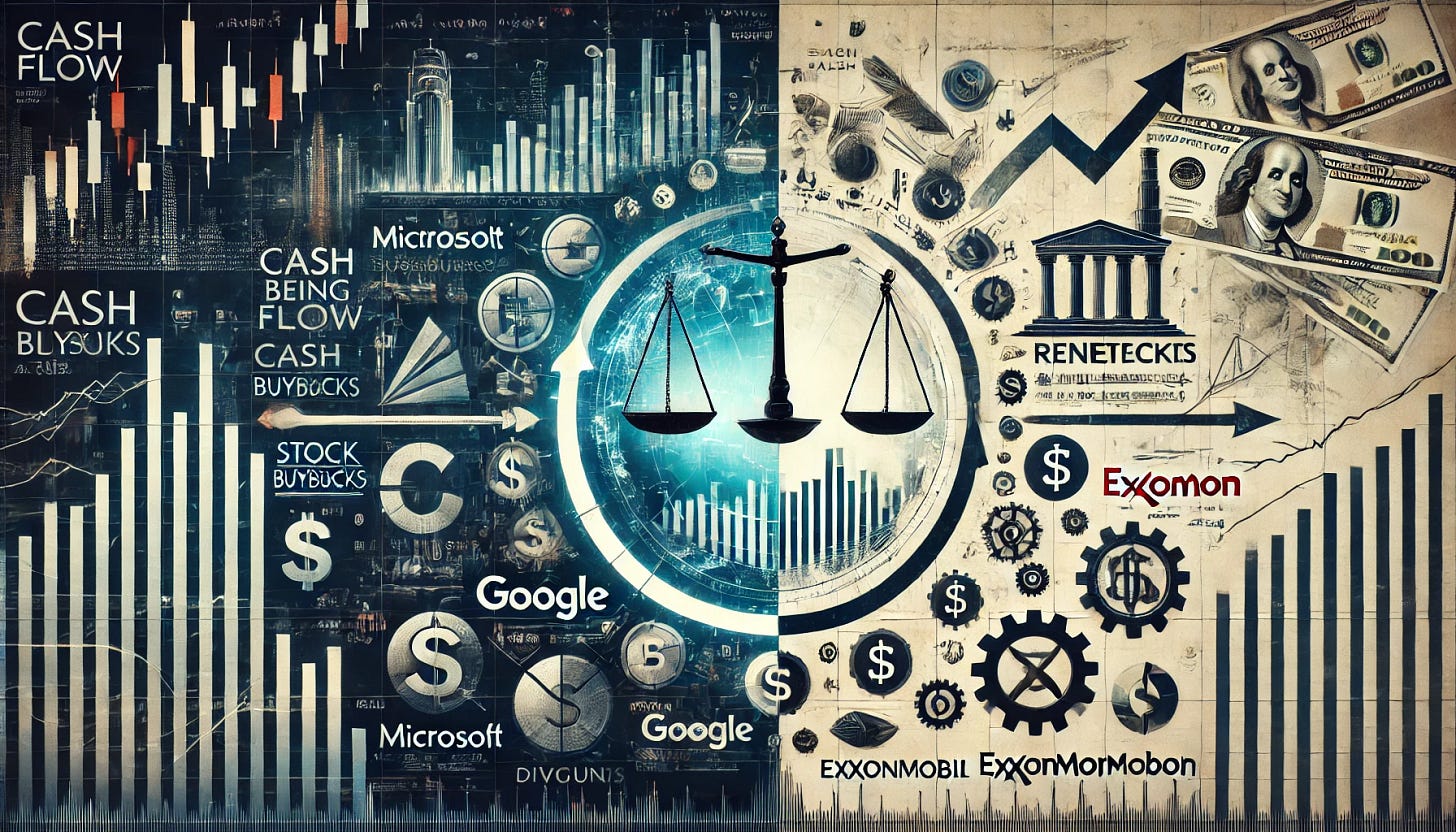Cash Flows
#121: Radically simple stock analysis.
There's a funny joke that goes like this. The value of an investment is equal to the present value of its future cash flows.
Sure, in an academic and abstract sense it may be true, but practically? Can we pretend to predict decades of future business performance with any sort of accuracy? What use is a Discounted Cash Flow (DCF) model where 90% of the value comes from a terminal value in year five? What about early stage companies that may be years away from profitability let alone shareholder distributions? Is Gold worthless? And of course we know that the market is muddled by human psychology, funds flows, momentum and sentiment anyway.
But what if, for the sake of argument, we take the opposite position and focus solely on cash flow in the most direct sense? That is, actual cash returned to shareholders. Let’s ignore everything about a business except for three things:
Distributions: The sum of dividends and share buybacks
Distribution Yield: Total distributions compared to market prices
Net Cash: Cash and equivalents (including liquid investments) less financial debt
Distributions represent the actual cash flow to shareholders in a given period, while the yield incorporates the company’s valuation. Changes in net cash demonstrate the accumulation or disbursement of cash flow after distributions, adjusted for the changes in leverage1.
This bottom-line perspective captures everything in the business above it — revenue growth, margins, capital expenditures etc. It demonstrates returns to shareholders today and the extent to which the company is over-paying or under-paying relative to the cash flow generation of the business. In other words, we should have some insight into both valuation and sustainability.
Take for example, Microsoft.
The Show-er
Considering that Microsoft’s revenue and net income have roughly doubled since 2019, it is somewhat surprising that the actual cash returned to shareholders has declined over the past two years and is only modestly higher than 2019. When compared to the appreciation in share price, the total distribution yield has collapsed from 5% in 2016 to just 1% today. Relative to the risk-free rate, the yield on MSFT shares have gone from a 5% premium return in 2016 to a 4% discount today.
And Microsoft is not merely hoarding cash. Instead, its net cash balance has declined considerably in the past several years, partially driven by the acquisition of Activision which closed in 4Q23. The total drawdown in cash balances of ~$70 billion since 2021 is equivalent to nearly two year’s worth of shareholder payouts2.
Before you scream, the glaring omission here is the return on capital investment. Microsoft’s capital should be allocated into the highest return investment, which may very well be acquisitions or GPUs for AI development. Accretive reinvestment of earnings could very well prove to be a better use of cash in the long-run than distributions today.
But total distributions need to double against a flat share price to return to a distribution yield of 2.5%, the average over the past several years (and still well below benchmark rates).
Let’s look at a tech company at a different stage of its cash-return cycle: Google.



